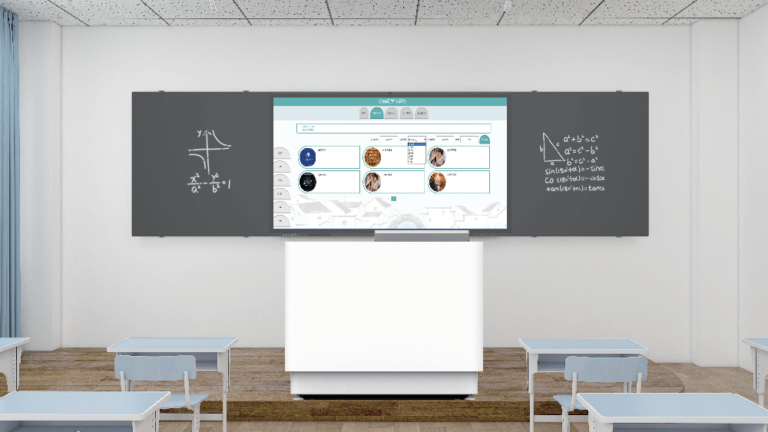When we talk about smart education today, it’s no longer just about digital tools—it’s about creating immersive learning environments powered by advanced audiovisual (AV) equipment. From touchscreen TVs and interactive whiteboards to wireless casting systems and document cameras, modern classrooms are evolving rapidly to support more dynamic, engaging, and student-centered learning. These tools are not only enhancing how teachers deliver content but also transforming how students interact, collaborate, and absorb knowledge. In this article, we’ll walk you through the essential AV equipment every 21st-century classroom should have, explore how they function, and explain how to integrate them effectively. Whether you’re planning a new school setup or upgrading existing systems, this guide will help you make informed decisions.
What Is Classroom AV Equipment?
Classroom AV (audiovisual) equipment refers to a range of integrated tools that use sound and visuals to enhance teaching and learning in educational settings. These include devices like touchscreen displays, projectors, interactive whiteboards, speakers, microphones, and document cameras. The core function of AV systems in the classroom is to help deliver content in a more engaging, interactive, and memorable way.
For children and adolescent students, audio and visual stimuli are among the most effective channels for absorbing information. Studies have shown that the human brain retains up to 80% of information delivered through visual means. Similarly, clear and immersive sound helps students stay focused, understand speech more accurately, and process complex ideas more efficiently. A well-balanced AV setup can significantly improve how students receive and retain knowledge.
In modern education, the demand for high-definition visuals and crystal-clear audio is no longer optional—it’s expected. Teachers increasingly rely on visual aids, videos, real-time screen sharing, and collaborative tools to explain complex subjects. In this context, AV equipment isn’t just about convenience; it’s a necessity.
Upgrading to a modern AV system is also a matter of student health and classroom efficiency. High-resolution screens reduce eye strain, especially important for younger students with developing vision. High-fidelity speakers and microphones ensure that even students at the back of the room can hear clearly without overstraining. In a digitally connected learning environment, advanced AV equipment makes classrooms more inclusive, interactive, and effective for all learners.
Must-Have Classroom AV Systems For Modern Education(Top 5 List)
In today’s modern classroom, integrating the right AV systems is key to creating an engaging, effective, and interactive learning environment. Here are five essential AV tools every school should consider:
Interactive Whiteboards or Smart Boards
Interactive displays have become the centerpiece of many classrooms. They combine the functionality of a traditional whiteboard with touchscreen capabilities, multimedia presentation tools, and real-time collaboration features. For example, the Ikinor 75-inch interactive display is widely used by teachers for its intuitive interface, multi-touch support, and built-in Android/Windows OS options. It allows educators to annotate over lessons, play videos, and run educational apps—all from one device.
Projectors with Wireless Screen Sharing
Even in the age of smart boards, projectors remain a versatile classroom AV tool. Today’s models support wireless connectivity, enabling teachers to share content from their laptops, tablets, or phones without cables. This allows for flexible movement around the room and encourages spontaneous participation from students who can also project their work easily.
Classroom Sound System (Microphones & Speakers)
Clear audio is essential for maintaining attention and ensuring every student can follow the lesson. A classroom audio system typically includes ceiling or wall-mounted speakers and wireless microphones for the teacher. This setup reduces vocal strain and ensures students in every corner of the room can hear clearly, regardless of ambient noise.
Document Cameras (Visual Presenters)
Document cameras are powerful visual tools that allow educators to display textbooks, handwritten notes, and real-life objects in real-time. They can zoom, rotate, and adjust lighting to provide detailed demonstrations, making them ideal for science experiments, math problems, and art projects.
Lecture Capture or Streaming Tools
Cameras and software for lecture capture allow teachers to record or stream classes for remote learners. This supports hybrid learning and allows students to revisit lessons anytime, promoting better retention and accessibility.
Benefits of AV Integration in Classrooms
With the core AV systems now clearly defined, the next question is—why should schools invest in these technologies in the first place? Beyond just looking modern, AV integration in classrooms offers a range of compelling benefits that directly impact student performance, teacher effectiveness, and the overall learning environment, in the following, lets figure it out!
One of the most significant benefits is the increase in student attention and participation. According to a study by an educational institute in Shenzhen, classrooms equipped with AV systems reported 15% higher academic performance compared to traditional ones. Visuals, animations, and sound help stimulate different areas of the brain, improving memory retention and understanding. For young learners, especially in primary and secondary schools, clear visuals and crisp audio significantly improve focus and reduce distractions.
The second one, Modern education embraces a mix of teaching methods. AV systems allow educators to implement blended learning effectively, combining traditional lectures with video content, animations, quizzes, and live demonstrations. Students can engage with material through interactive whiteboards, watch educational documentaries, or participate in live video calls with experts from around the world. This dynamic approach keeps learning fresh and tailored to diverse learning styles—visual, auditory, and kinesthetic.
AV systems reduce the need for outdated tools like chalkboards, which can be messy and even harmful due to chalk dust. Teachers no longer need to waste time erasing boards or fiddling with multiple devices—everything is centralized in one smart interface. Microphones minimize vocal strain, while document cameras and screen-sharing tools simplify explanations. This boosts both teaching efficiency and classroom cleanliness, giving educators more time and energy to focus on what truly matters: delivering impactful lessons.
How to Integrate AV Equipment in the Classroom
Successfully integrating AV equipment into the classroom goes far beyond simply purchasing hardware. A strategic implementation plan ensures that the technology delivers its full educational potential while remaining user-friendly and sustainable.
1. Plan for Infrastructure: Power, Cabling, and Network
Before installation, schools must assess classroom infrastructure. This includes power outlets, voltage compatibility, and secure, high-speed internet access. AV systems like interactive displays and projectors often require both strong Wi-Fi and wired connections to support screen sharing, online platforms, and cloud-based tools. Structured cabling also ensures neat, hazard-free environments and efficient device operation.
2. Choose Compatible and Scalable Systems
It’s essential to choose AV equipment that integrates seamlessly with existing digital learning tools, such as LMS (Learning Management Systems) like Google Classroom or Microsoft Teams. Devices should support open formats and software interoperability. For example, Ikinor smart boards are widely used because of their plug-and-play design and easy compatibility with education software platforms.
3. Emphasize Teacher Training and Ongoing Support
No AV system can succeed without user confidence. Teachers need basic training on how to operate and troubleshoot classroom AV devices. Regular professional development sessions and easy-to-access user guides can help bridge the tech knowledge gap. Schools should also provide technical support to quickly resolve any hardware or software issues during teaching hours.
For deeper implementation guidance, educators can refer to resources such as Smart Board Installation Guide or How to Choose the Right Smart Board Dimension.
Real Case Study: How Smart Audio and Visual Systems Changed a Primary School in Kuwait
In the heart of Kuwait City, a private primary school with approximately 200 students faced a common challenge—outdated teaching tools that limited both student engagement and teaching efficiency. Determined to modernize its learning environment, the school partnered with Ikinor to implement a cost-effective and high-quality AV solution across all classrooms.
The school opted for a bulk purchase of 86-inch interactive displays from Ikinor, known for their responsive touchscreens, vivid 4K resolution, and seamless compatibility with educational software. This upgrade transformed every classroom into a modern, interactive learning hub where teachers could easily integrate multimedia, annotate lessons in real-time, and engage students through visual storytelling and collaborative exercises.
One of the standout benefits of this partnership was the 30% cost savings compared to offers from local or regional suppliers. With Ikinor’s direct manufacturing model and flexible customization options, the school not only stayed within budget but also received tailored support in Arabic-language interface setup, staff training, and remote technical assistance.
Within just one academic term, teachers reported improved class participation, especially among visual and auditory learners. Lessons that once relied heavily on chalkboards and printed materials were now enriched with videos, diagrams, and real-time feedback.
Parents also noticed the change. Students were more motivated to attend school, and many began showing greater enthusiasm for subjects like science, math, and languages.
This case highlights how strategic AV integration—when done with the right partner—can dramatically upgrade classroom dynamics, reduce costs, and better prepare students for a digital-first future.
Final Thoughts: Building a Future-Ready Classroom
As education continues to evolve, classroom AV systems must also keep pace with emerging trends like artificial intelligence, remote learning, and hybrid classrooms. A future-ready classroom isn’t just about having the latest tech—it’s about using audio-visual tools to create inclusive, interactive, and flexible learning environments that adapt to different teaching methods and student needs.
Smart AV systems such as interactive displays, digital microphones, and real-time collaboration tools will play a central role in supporting AI-powered teaching aids, automated assessments, and virtual classroom management. Whether teaching in-person or remotely, educators can offer a more dynamic and personalized experience for every student.
For schools with limited budgets, smart planning is key. If you’re planning to install more than 5 units, it’s often more cost-effective to purchase directly from Chinese manufacturers like Ikinor, who offer bulk discounts and factory-direct customization. For smaller quantities or urgent setups, working with a local distributor may provide faster support and easier maintenance.
Ultimately, investing in classroom AV integration is an investment in the future of education. It not only enriches the teaching experience but also empowers students to learn more effectively in a world where digital fluency is essential.





